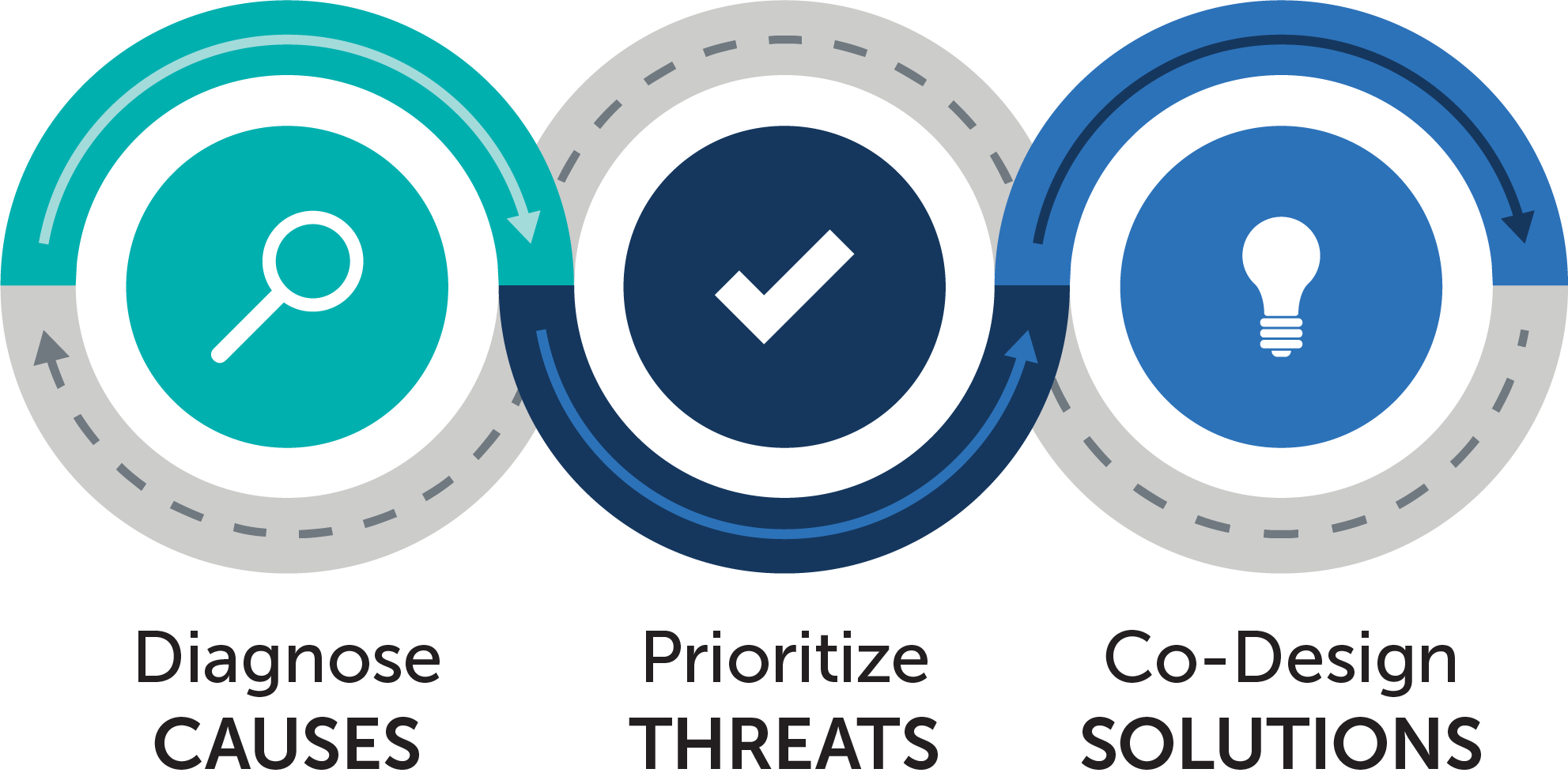5 reasons to join the movement to raise teacher morale
For the past year, teacher morale has been at an all-time low, with high costs for schools and students. From stalled strategic initiatives to chronic teacher absences and mid-year resignations, practically every district has been grappling with the consequences of low morale.
While school and district leaders are acutely aware of this challenge, most efforts to raise teacher morale have fallen short. From self-care initiatives and teacher appreciation campaigns to mental health benefits and salary raises, districts are working hard to better support the well-being of their teachers and staff. But as the new school year begins, we continue to hear near-daily reports of teacher absences, resignations, and anxiety around another year in today’s classrooms.
Despite our efforts, this is probably the worst year we have seen for teacher morale. We are doing what we can, but we are kind of at a loss.
Superintendent
Midwestern school district
Research across multiple industries highlights two reasons why so many current initiatives to raise teacher morale are failing to deliver results:
- Most current initiatives address the symptoms of low morale, but not the underlying causes. In some districts, efforts to promote self-care have increased frustration among teachers, as they emphasize helping employees to cope with a poor environment rather than working to improve conditions.
- The process of raising morale is just as important as the eventual solutions. In organizations that have successfully raised and sustained higher levels of employee morale, the consistent theme has been the process of generating solutions—not the solutions themselves.
The teacher morale momentum loop
That path to raise teacher morale starts with slowing to diagnose the root causes of low morale in your schools. Employee engagement surveys might tell you how many teachers are struggling with low morale, but few will tell you why. Research-aligned diagnostics that assess key influencers of morale and burnout are critical and should be followed by teacher conversations to add qualitative understanding to your findings.
The next key is not to try and solve everything. Successful organizations focus on one or two key morale threats at a time to achieve tangible improvements in those areas. The process for selecting those threats needs to be consistent and transparent for all employees.
Last, but perhaps most importantly, administrators must collaborate with teachers to design effective solutions. The biggest mistake your leadership team can make is trying to implement solutions to low morale without input from your teachers. To avoid frustration, prevent unintended consequences, and ensure buy-in for new initiatives, teachers need to help craft morale boosters that meet their needs on a daily basis. Missing this key step is sure to do more harm than good.
EAB researchers have taken the guesswork out of building a successful system for raising morale in public schools. The Teacher Morale Momentum Loop provides a repeatable, three-step process that districts can use to raise and sustain higher levels of morale for years to come.

Our nationwide Collaborative to Raise Teacher Morale is leading districts across the country through the collective implementation of this proven process. Our goal is to help reverse the tide of burnout in schools today and create the conditions for teachers (and their students) to thrive.
Five reasons to join the movement
-
Our solution is research-based, proven across states and industries
“I love the strong research basis for all of this! Thank you!” – Collaborative participant
This issue is too important for districts to waste time searching for solutions. The proven application of this three-phase process across industries—but especially within healthcare—provides districts with confidence that realizing higher levels of morale is possible, even in the most challenging situations.
-
The process is achievable
“The structure of the Collaborative was perfect. It took a messy process and made it feel doable and possible!” – Superintendent and Collaborative participant
Even the most effective solutions are useless if they are not feasible to implement. The Teacher Morale Collaborative provides step-by-step guidance that will make the implementation of this proven process as easy as possible for busy district leadership teams.
-
Our ready-made resources save time and improve results with actionable data
“I really like the diagnostic tools. It provides information on why we are acting, not just because we ‘think’ there is a problem.” – Superintendent and Collaborative participant
Making this process possible requires tools and communications that few district leadership teams have time to build. Consequently, EAB has taken that step for you—building research-based diagnostics, prioritization tools, and a compendium of starting practices to build from with your teachers. These tools will save you time and help your team adhere to EAB’s research and resulting best practices.
-
You'll have a nationwide cohort of peers with which to share solutions and troubleshoot challenges
“Listening and learning from other district leaders has been the most valuable part of our experience in the Collaborative. It is helpful to hear new ideas and consider ways those may be impactful in our schools.” – Superintendent and Collaborative participant
The age of solving challenges alone is past. The pandemic ushered in a new era of collaboration that will benefit schools and students for years to come. Joining the Collaborative to Raise Teacher Morale will enable your district to realize the potential of sustained, purposeful connection with districts beyond your region or state.
-
Demonstrate a visible commitment to your teachers (and staff)
“The benefit of building this morale momentum loop is that it helps demonstrate a commitment to addressing issues of morale over time. Because it’s a systemic change, initiating the momentum loop illustrates to teachers that the district is serious about addressing morale.” -Superintendent and Collaborative participant
To improve teacher morale and prevent further attrition, districts need to show that they are serious about protecting their teachers’ well-being and creating an environment where they can succeed.
Early collaborative results indicate that teachers see this investment and are buying into the process, with several districts seeing 80%+ response rates to their initial diagnostic surveys. Those response rates are providing actionable data to drive improvements and raise morale in their schools today.
Success starts with successful teachers
Research has repeatedly shown that teacher quality is the most important school-related factor for improving student achievement. At a time when students need schools to offset two years of disruption to their learning, investing in teacher morale may be the most important step you can take to build happy and thriving schools for your community this year.
EAB is launching the next Collaborative to Raise Teacher Morale. Contact [email protected] to participate.


More Blogs

From building managers to strategic leaders

From cell phones to STEM: What district leaders are focused on right now
